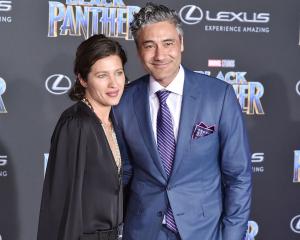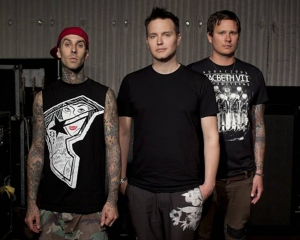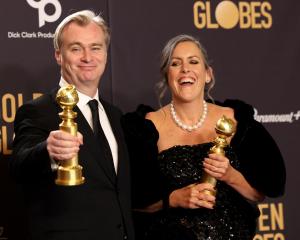
On an industrial site in Surrey, just outside London, lies a patch of overgrown grass, home to a stark future landscape: filthy cars with blacked-out windows, charred Romanesque buildings, a huge, black face that suggests something big and dangerous has beheaded a statue.
But the real action is taking place inside a messy mechanic's garage.
Primeval star Hannah Spearitt, who found fame 11 years ago in pop group S Club 7, is executing vicious martial arts kicks at a dagger-wielding attacker.
Her opponent is a misplaced medieval knight convinced that her character, Abby, with her spiky modern hair and Iggy Pop singlet, is a demon.
Although we won't see the third series and its clever mythological themes for some time, the second series started on TV2 recently.
Evolution zoologist Prof Nick Cutter (Douglas Henshall) and his team of quirky experts will continue to investigate prehistoric and futuristic creatures that are mysteriously showing up in 21st-century Britain, via shimmering time portals known as anomalies.
Last season, dinosaurs, giant centipedes and futuristic monsters charged through tears in the space/time continuum, ravaging their way through the London Underground and the suburbs and eating people in public swimming pools.
Despite some critics slamming the CGI creatures for their cartoonish appearance - perhaps unfairly, considering the show doesn't have a Jurassic Park-sized budget - the fantasy series reinvigorated family viewing with its Dr Who-meets-Land of the Lost themes.
But it's the real creatures who have struck a chord with viewers.
Alongside Henshall's quietly steely Cutter, is his chiselled assistant Stephen (James Murray), daft but brilliant student Connor (Andrew Lee-Potts) and fiery lizard expert Abby.
Henshall had never played the hero before and Lee-Potts had been playing TV psychopaths.
Primeval was his first shot at a light-hearted role after a lifetime of being "successful at being unsuccessful".
Lee-Potts put his own spin on his character, veering away from the "nerd" the producers wanted him to play for something a little more eccentric and funny.
"I don't ever feel that I try to play my character for laughs," he says.
"Maybe I'm just genuinely strange the way I deliver stuff.
"We thought `This is either going to be brilliant or really s . . . '."
The first series was sold to 47 broadcasters in 35 territories, from the United States to Romania.
"It has a very contemporary and wide appeal because it's about heroism, it's about good and evil," says series three producer Tim Bradley.
"They're aspirational characters for a young audience.
"There's a moral and social dynamic that crosses through all language barriers.
"It's very accessible.
"It gets people excited in a bit of science and an action storyline.
"Apart from cracking through time through the anomaly, we try to make it as scientific as possible."
The risky casting of Henshall as Cutter is undoubtedly part of the show's success.
Not exactly your everyday hero, his portrayal of Cutter borders on Mulder-aloofness.
It helps that he isn't just battling physical demons.
In the first season he found his scientist wife, Helen (Juliet Aubrey), who had disappeared through an anomaly eight years earlier.
That emotional storyline will continue to add a sense of Lost-style mystique to an otherwise action and FX-driven show as series two continues to explore the Cutter and Helen storyline, and the love triangle with Stephen.
There's also some brutal cast-culling to expect as a major character is killed off.
Like the Harry Potter films, the series seems to be getting darker as it progresses.
We can also look forward to anomalies popping up in theme parks, sports grounds and on the motorway and sabre-toothed tigers, deadly worms and highly-evolved sharks terrorising the public. - Rebecca Barry.












